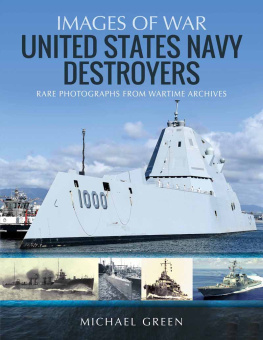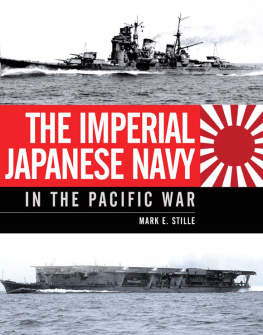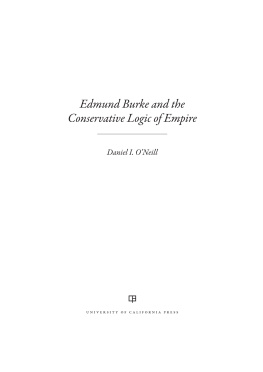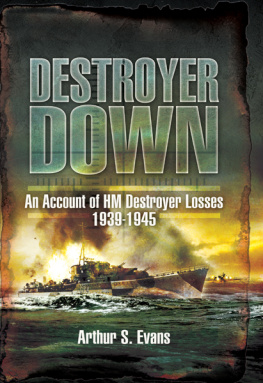DESTROYER SQUADRON
This book has been brought to publication
with the generous assistance of
the United States Naval Academy Class of 1945.
DESTROYER SQUADRON
Combat Exploits of
Arleigh Burkes Gallant Force
KEN JONES
BLUEJACKET BOOKS
NAVAL INSTITUTE PRESS
Annapolis, Maryland
This book has been brought to publication by the generous assistance of Marguerite and Gerry Lenfest
Originally published by the Chilton Company
First Bluejacket Books printing, 1997
Library of Congress Cataloging-in-Publication Data
Jones, Ken, 1903 Feb. 11
Destroyer Squadron 23 : combat exploits of Arleigh Burkes gallant force / Ken Jones.
p. cm. (Bluejacket books)
Originally published: Philadelphia : Chilton Co., 1959.
Includes index.
ISBN 978-1-61251-183-2
1. World War, 19391945Naval operations, American. 2. United States. Navy. Destroyer Squadron, 23rd. 3. Burke, Arleigh A., 1901 . I. Title. II. Series.
D769.537 23rd.J66 1997
For my beloved wife, Iris
by
Fleet Admiral W. F. Halsey, United States Navy (Retired)
For many decades, men have searched for a magic formula for leadership. Volumes have been written in an attempt to describe those personal qualities that kindle the spark of inspiration among others in great human undertakings.
But a master equation has not yet been evolved, because leadership is a product of many variablesamong them human character, individual personality, and the times and circumstances in which men live.
History has recorded many instances in which the right man was present at the right time to further a just cause and bring credit to his nation at a critical moment.
This book tells the story of such a man and such a time.
Commodore Arleigh Burke provided the fire of leadership that fused a squadron of destroyers into a superb combat organizationDESTROYER SQUADRON 23, the Gallant Squadron of this booka real fighting outfit with that vital combat ingredient we know as fighting spirit.
Fighting spirit, like leadership, is difficult if not well-nigh impossible to describeyet that spirit is brought to life in these pages. Here is a narrative that captures the elusive and mysterious combination of human qualities that add up to inspiration, because here is a story of action, human action, and reaction, in the heat of battle.
But this is more than a story of ships and their tactical deployment in sea battles that will live as classics of naval warfare. Most of all, it is a story of men in actionover thirty-six hundred officers and men of the United States Navyand how they lived and fought as a magnificent combat team.
Men of the sea have known for generations that individual ships develop qualities of personality and character all their own.
A ship is as good as the men who man her!
The whole-hearted effort and teamwork of every last officer and man on board are required to give a ship the capabilities so necessary to become an effective fighting unit. Each officer and man is proud of his ship and his own important part in making her an efficient weapon of war.
This story of the Gallant Squadron describes the rare phenomenon of a spirit which extended beyond the individual ship to create a sense of pride in, and loyalty to, the entire squadron.
Each ship was goodnot only because her men were good, but also because she belonged to DesRon-23! In this, each ship contributed to a higher standard, and each ship strove to live up to the reputation earned by the whole squadron.
While the period covered by this book is relatively short, it was a crucial period in the Pacific War, and the vital part played by Destroyer Squadron 23 under the inspiring leadership of Arleigh Burke was, in a sense, only a beginning, but the vital beginning, of a steady drive forward which gained momentum and power until United States naval forces steamed victoriously into Tokyo Bay.
FLEET ADMIRAL
UNITED STATES NAVY (RETIRED)
For an author, reaching the end of a book is like reaching the end of a journey. In the case of Destroyer Squadron 23 it has been a long journey and the most rewarding of my life. Many have accompanied me briefly along the wayCavenagh, Lampman, Reynolds... Others have peeped helpfully over my shoulderArmstrong, Gano, Hamberger, Stout. All have given generously of their mellow wisdom and, more importantly, of the inspirational spirit of the Squadron which abides in them.
In all candor, Destroyer Squadron 23 is not a writing for those who would dwell overlong upon or cuddle the dolorous sentiment of John Donne... never send to see for whom the bell tolls; it tolls for theeunless they are willing, also, to accept its rational corollary, which is that the bell can peal as well as it can toll, and that it peals for thee, too.
Many things are recorded of United States Destroyer Squadron 23. The one thing never recorded of them is that they took counsel of their fears, for they did not. They were confident in competence, strong in faith, and for them the bell never tolled and it never will. It pealed a clear signal of their courage, their conviction, and their dedication even unto death. And in pealing for them it peals also for thee and for me.
A Word of Explanation and Appreciation
This chronicle has been taken from and faithfully reflects the official records of the United States Navy. In perhaps two or three instances which the reader will have no difficulty identifying, I have found it desirable to supply names for individuals whose participation in the events recorded seemed something less than champion. With these inconsequential exceptions, however, all persons are identified by their proper names. In the matter of dialogue the words spoken may be accepted as interpreting reliably the personality of the speaker and the sense of the situation portrayed. All TBS transmissions are recorded word for word as they appear in the official record compiled at the times the conversations took place. All other dialogue is substantially supported by log entries, by signed battle reports, by war diaries, or by official memoranda, or else reported orally or in writing to the author by the speakers. All times given are as they appear in the officially accepted record. Interpretation of senior Japanese officers is supported by post-war interrogations of enemy nationals, in many instances including the subjects themselves.
Together with all who write of this period of our naval history I must acknowledge my indebtedness for guidance to the impressive works of Samuel Eliot Morison, naval historian; and to Theodore Roscoe whose compilation of destroyer operations in World War II often saved me much time by indicating appropriate areas for intensive research. I should like, also, to acknowledge my debt to Colonel Allison Ind, Army of the United States, for the guidance derived from his study of the intelligence network of coast watchers and secret agents, of which he was a part, which functioned for the Allies throughout the campaign in the Solomons.
Next page













